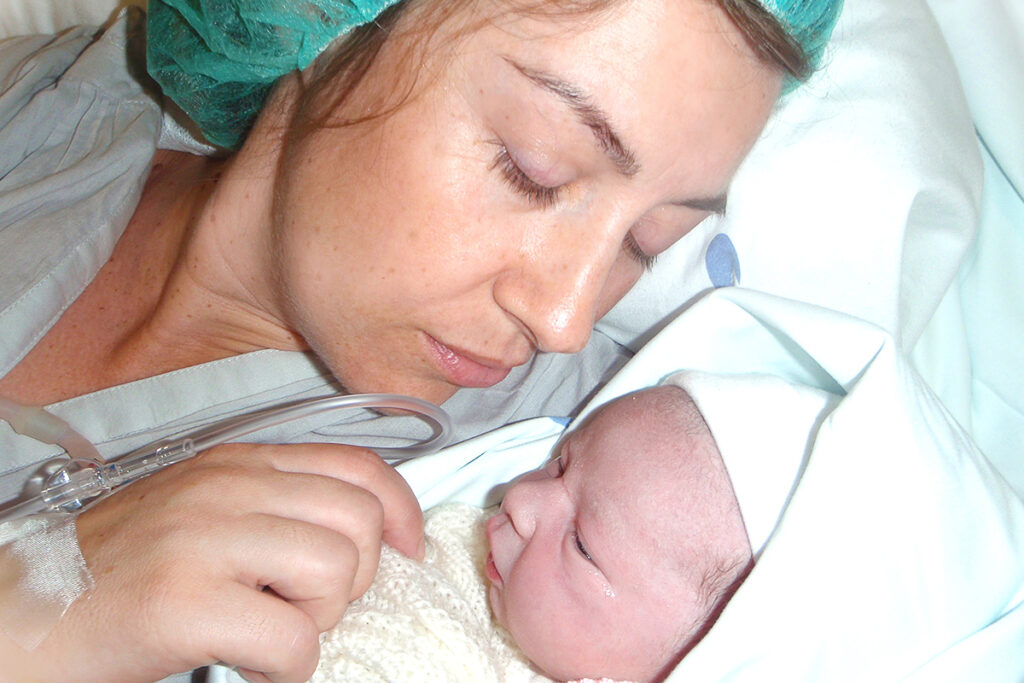Acne (acne vulgaris) is an inflammatory skin disease characterized by skin rashes: white and blackheads, pustules, papules, and cysts. Acne affects 95% of boys and 83% of girls by age 16 and also occurs in the adult population.
Acne is caused by: bacterial colonization of Cutibacterium acnes, increased production of sebum, abnormal keratinization of the ducts of the sebaceous glands, and hormonal disorders. Contribute to acne: foods with a high glycemic index, dairy products, fatty foods, and chocolate. Read more about the relationship between diet and acne in the article Nutrition and the Acne.
Modern Methods to Treat Acne
Standard acne therapy is suitable for non-inflammatory comedones or mild inflammatory disease and includes topical treatments:
- keratolytic and alpha hydroxy acids – exfoliate dead cells;
- benzoyl peroxide – inhibits bacteria that cause acne, has an anti-inflammatory effect, reduces the production of sebum, destroys comedones;
- azelaic acid has an antibacterial and anti-inflammatory effect, eliminates comedones, brightens pigmentation, normalizes the processes of keratinization;
- retinoids reduce the production of sebum and inflammation;
- topical antibiotics – kill bacteria that cause acne, and reduce inflammation.
Patients are given oral antibiotics and retinoids for severe or extensive acne and for acne refractory to topical therapy. Isotretinoin is an oral retinoid that reduces sebum production, inhibits the formation of comedones, and reduces inflammation. A course of treatment with isotretinoin leads to long-term remission, even in the most severe cases. However, isotretinoin is associated with serious side effects, including joint pain and stiffness, inflammation of the tendons, lipid disorders, hair loss, sunburn, hyperpigmentation, dry mucous membranes and skin, abnormal liver function tests, pancreatitis, depression, anemia, leukopenia. Pregnant women are at particular risk, as isotretinoin is associated with miscarriage and congenital malformations.
Scientists are constantly looking for new acne treatments that bring good results but do not have serious side effects. One such method is to target the skin microbiota with topical and oral probiotics.
Skin Microbiota and the Acne
Microbiota (microbiome) is a set of microorganisms that inhabit a particular environment. Bacteria, viruses, fungi, and mites colonize the skin. Most microorganisms that inhabit the skin are harmless and live in symbiosis with skin cells. The bacterial composition of the skin microbiota depends on cosmetics, environmental factors, profession, exposure to UV radiation, antibiotics, and humidity.
Pathogenic bacteria that can colonize the skin include group A streptococci (S. pyogenes) and gram-negative bacilli (P. aeruginosa). Pathogenic fungi that can cause skin diseases include dermatophytes Microsporum, Trichophyton, and Epidermophyton.
Demodex mites live in hair follicles and sebaceous glands and are carriers of the bacterium Bacillus oleronius, which causes inflammatory reactions. Usually, the presence of ticks does not manifest itself in any way, but in conditions with suppressed immunity, the number of Demodex increases, causing the disease demodicosis.
Cutibacterium acnes (C. acnes) inhabit the skin’s surface in areas rich in sebum: the scalp, face, chest, and back. The number of C. acnes increases during adolescence and adulthood and decreases after 50 years. C. acnes is considered the most likely causative agent of acne. However, C. acnes also play a positive role in maintaining a low skin pH by releasing free fatty acids and inhibiting the growth of S. aureus and Streptococcus, which can cause skin disease and inflammation.
There are different strains of Cutibacterium acnes. Some strains are associated with healthy skin, while others may contribute to the development of acne. The strains associated with acne produce more porphyrin, which causes inflammation in keratinocytes, the primary cells in the top layer of the skin.
C. acnes stimulates the immune system response and the production of cytokines. The cytokines IL-1 and IL-6 stimulate the proliferation of keratinocytes. IL-1 is a pro-inflammatory cytokine that increases sebum production and reduces linoleic acid, needed to maintain the skin’s protective barrier.
Impact of Gut Microbiota on Acne
Gut health is linked to skin health. The quality of the intestinal microbiota affects the tendency to acne and the condition of the digestive tract:
- A study of the intestinal microbiota in 114 patients with acne showed that 54% had impaired intestinal microbiota. Adding drugs that improve the intestinal microbiota to the complex therapy reduced the treatment time by more than 2 times.
- A study on 31 acne patients and 31 healthy individuals showed that acne patients had reduced levels of Bifidobacterium, Lactobacillus, Coprobacillus, Butyricicoccus, and Allobusulum.
Western diet and stress upset the balance between beneficial and pathogenic microorganisms, contributing to inflammatory skin diseases. The microbiota affects the production of short-chain fatty acids (SCFAs), which enhance the intestinal barrier function and inhibit the development of pathogenic microorganisms. For example, propionic acid is toxic to S. aureus. SCFAs may also influence skin resistance to cutaneous staphylococci and C. acnes. Read more about SCFA in the article “Intestinal Microbiota as a Health Regulator“.
Topical Probiotics for Acne Treatment
Probiotics are live microorganisms that confer health benefits when administered in adequate amounts. The best-known probiotic microorganisms are Lactobacillus and Bifidobacterium. Probiotics can be used in medicines, nutritional supplements, cosmetics, and foods.
Probiotics bind to the skin’s surface, suppress pathogens, promote the production of antimicrobial substances, and increase skin immunity. The most common strains of probiotics used in cosmetics are Bacillus sabtilis, Lactobacillus acidophilus, Lactobacillus casei, Lactococcus lactis, and Lactobacillus plantarum. These probiotics moisturize, stimulate lipid production and improve regeneration processes.
Topically applied probiotics protect the skin from colonization by pathogens:
- A study by Italian scientists has shown that applying Streptococcus thermophilus to the skin for seven days increases the production of ceramides. Ceramides are cell membrane lipids that protect against water loss and the penetration of pathogenic microorganisms.
- Ceramide phytosphingosine has anti-inflammatory and antimicrobial activity against Cutibacterium acnes.
- Korean scientists investigated the effect of lotion on faecalis in mild to moderate acne. Patients have reduced papules and pustules. The study found that E. faecalis lotion could be an alternative to topical antibiotic treatment.
- Another study by Italian scientists showed that Streptococcus salivarium spp. and thermophilus S244 stimulate the production of enzymes that moisturize the skin and slow the aging process.
- Taiwanese scientists observed the skin condition of 15 women for two months. The women used a base cream on the left side of the face and a base cream containing heat-killed plantarum-GMNL6 on the right side. The bacterium L. plantarum-GMNL6 increased collagen synthesis, reduced melanin synthesis, and suppressed Staphylococcus aureus and Cutibacterium acnes. Skin hydration and color improved, and pigmentation and wrinkles decreased.
Oral Probiotics for Acne Treatment
American scientists conducted a study on 45 women with acne who took the antibiotic minocycline. The scientists were interested in whether the probiotic could reduce the side effects of minocycline and improve its healing effect. The participants were divided into three groups: the first received a probiotic, the second received minocycline, and the third received minocycline and a probiotic. The third group experienced a significant reduction in the total acne lesions compared to the other groups. Probiotics can be considered as a therapeutic or adjunct treatment option for acne. Taking probiotics during treatment with minocycline enhances the anti-inflammatory effect.
Scientists from the UK have shown that dietary fiber and probiotics (L. casei, L. plantarum, L. gasseri, L. lactis) suppress C. acnes. Dietary fiber stimulates probiotic microorganisms’ growth and inhibits pathogens’ growth.
A team of scientists from Chile, Argentina, and Japan has shown the antimicrobial and immunomodulatory properties of the lactic acid bacterium Weissella viridescens UCO-SMC3, obtained from garden snail mucus. The bacterium was resistant to adverse conditions of the gastrointestinal tract and inhibited the growth of C. acnes. Oral and topical administration of the bacterium reduced inflammation. A cream containing Weissella viridescens UCO-SMC3 reduced skin rashes.
Korean scientists have shown that Lactobacillus acidophilus and turmeric extract are effective against C. acnes.
Conclusions
Acne is an inflammatory skin disease that may be related to the condition of the digestive tract and the intestinal microbiota composition. Oral probiotics improve gut microbiota composition and reduce inflammation. Topical probiotics suppress pathogens and enhance skin immunity. The use of probiotic supplements, as well as cosmetics with probiotics, can reduce acne breakouts.
Useful article, necessary information? Share it!
Someone will also find it useful and necessary:
Reference
Microbiome and Probiotics in Acne Vulgaris – A Narrative Review



